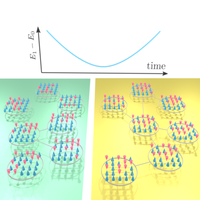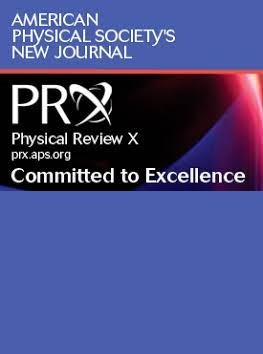量子多体系统的波函数网络描述和柯尔莫哥洛夫复杂性
IF 11.6
1区 物理与天体物理
Q1 PHYSICS, MULTIDISCIPLINARY
引用次数: 0
摘要
可编程量子设备现在能够以前所未有的水平探测波函数。这种能力的基础是将原子和量子比特阵列的多体状态投射到测量基础上,从而产生系统波函数的快照。然而,从这些观测结果中提取和处理信息仍然是一个有待探索的课题。人们往往不得不分析低阶相关函数,即放弃大部分可用的信息内容。在此,我们介绍波函数网络--一种基于网络理论描述波函数快照的数学框架。对于多体系统来说,这些网络可以是无标度的--这种数学结构在从生物学到流行病学再到互联网科学等广泛领域都取得了巨大的成功和应用。我们通过引入协议来提取与量子模拟器输出相对应的柯尔莫哥洛夫复杂性,并实施基于网络间相似性测试的完全可扩展跨平台认证工具,展示了将这些技术应用于量子科学的潜力。我们通过分析利用雷德堡量子模拟器获得的多达 100 个原子的实验数据,展示了无标度网络的出现。我们的方法说明了在跨越相变时,模拟器的复杂性如何降低,而相关长度如何增加--这是在数据空间中建立通用行为的直接标志。通过比较实验与数值模拟,我们在波函数层面实现了高达 4 μs 时标的交叉验证,置信度高达 90%,并以前所未有的精度确定了实验校准区间。我们的框架一般适用于量子计算机和模拟器的输出,可就地获取系统波函数,并要求探测精度和重复率达到目前大多数可用平台的水平。本文章由计算机程序翻译,如有差异,请以英文原文为准。

Wave-Function Network Description and Kolmogorov Complexity of Quantum Many-Body Systems
Programmable quantum devices are now able to probe wave functions at unprecedented levels. This is based on the ability to project the many-body state of atom and qubit arrays onto a measurement basis which produces snapshots of the system wave function. Extracting and processing information from such observations remains, however, an open quest. One often resorts to analyzing low-order correlation functions—that is, discarding most of the available information content. Here, we introduce wave-function networks—a mathematical framework to describe wave-function snapshots based on network theory. For many-body systems, these networks can become scale-free—a mathematical structure that has found tremendous success and applications in a broad set of fields, ranging from biology to epidemics to Internet science. We demonstrate the potential of applying these techniques to quantum science by introducing protocols to extract the Kolmogorov complexity corresponding to the output of a quantum simulator and implementing tools for fully scalable cross-platform certification based on similarity tests between networks. We demonstrate the emergence of scale-free networks analyzing experimental data obtained with a Rydberg quantum simulator manipulating up to 100 atoms. Our approach illustrates how, upon crossing a phase transition, the simulator complexity decreases while correlation length increases—a direct signature of buildup of universal behavior in data space. Comparing experiments with numerical simulations, we achieve cross-certification at the wave-function level up to timescales of with a confidence level of 90% and determine experimental calibration intervals with unprecedented accuracy. Our framework is generically applicable to the output of quantum computers and simulators with in situ access to the system wave function and requires probing accuracy and repetition rates accessible to most currently available platforms.
求助全文
通过发布文献求助,成功后即可免费获取论文全文。
去求助
来源期刊

Physical Review X
PHYSICS, MULTIDISCIPLINARY-
CiteScore
24.60
自引率
1.60%
发文量
197
审稿时长
3 months
期刊介绍:
Physical Review X (PRX) stands as an exclusively online, fully open-access journal, emphasizing innovation, quality, and enduring impact in the scientific content it disseminates. Devoted to showcasing a curated selection of papers from pure, applied, and interdisciplinary physics, PRX aims to feature work with the potential to shape current and future research while leaving a lasting and profound impact in their respective fields. Encompassing the entire spectrum of physics subject areas, PRX places a special focus on groundbreaking interdisciplinary research with broad-reaching influence.
 求助内容:
求助内容: 应助结果提醒方式:
应助结果提醒方式:


